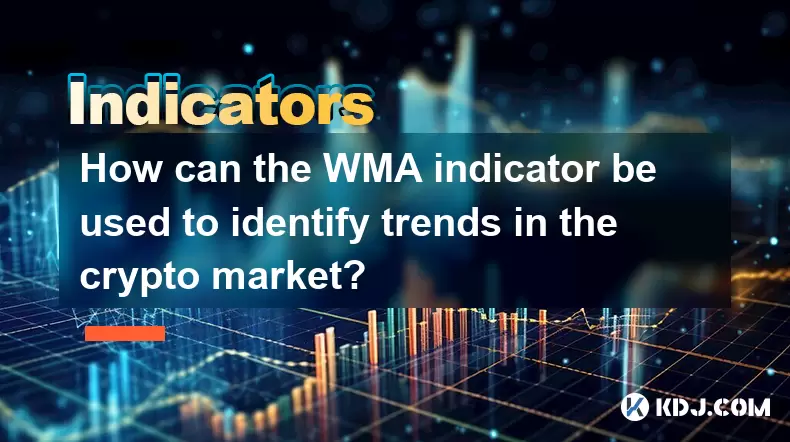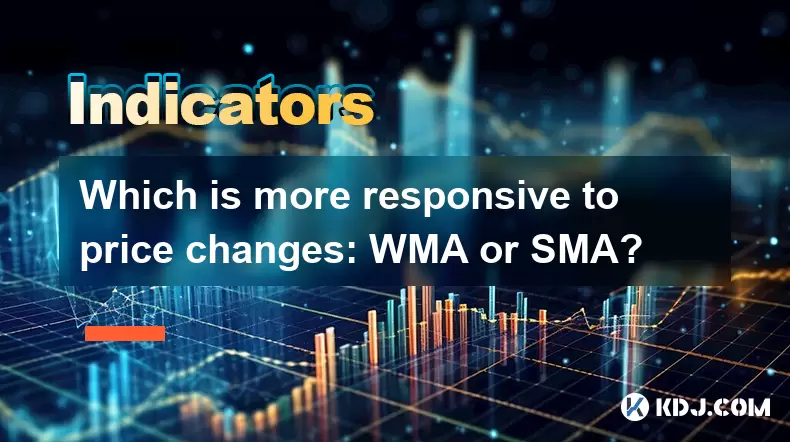-
 Bitcoin
Bitcoin $118300
-0.58% -
 Ethereum
Ethereum $3825
0.11% -
 XRP
XRP $3.137
-0.71% -
 Tether USDt
Tether USDt $0.9999
-0.01% -
 BNB
BNB $803.9
-3.37% -
 Solana
Solana $181.5
-1.94% -
 USDC
USDC $0.9999
0.01% -
 Dogecoin
Dogecoin $0.2238
-2.51% -
 TRON
TRON $0.3358
2.12% -
 Cardano
Cardano $0.7844
-2.16% -
 Hyperliquid
Hyperliquid $43.31
-1.48% -
 Sui
Sui $3.807
-4.04% -
 Stellar
Stellar $0.4203
-1.96% -
 Chainlink
Chainlink $17.79
-3.00% -
 Bitcoin Cash
Bitcoin Cash $567.8
-1.34% -
 Hedera
Hedera $0.2614
-4.30% -
 Avalanche
Avalanche $24.19
-4.46% -
 Litecoin
Litecoin $109.2
-0.74% -
 UNUS SED LEO
UNUS SED LEO $8.969
-0.01% -
 Toncoin
Toncoin $3.404
3.97% -
 Ethena USDe
Ethena USDe $1.001
-0.01% -
 Shiba Inu
Shiba Inu $0.00001307
-3.19% -
 Uniswap
Uniswap $10.33
-1.23% -
 Polkadot
Polkadot $3.884
-4.06% -
 Monero
Monero $312.9
-1.87% -
 Dai
Dai $1.000
0.01% -
 Bitget Token
Bitget Token $4.537
-2.24% -
 Pepe
Pepe $0.00001156
-3.40% -
 Cronos
Cronos $0.1437
-0.89% -
 Aave
Aave $282.8
-2.77%
What does it mean that the red column of the monthly MACD is enlarged again?
The enlargement of the red column on the monthly MACD signals increasing bearish momentum, suggesting a potential long-term trend reversal in cryptocurrency prices.
Jun 19, 2025 at 12:21 am

Understanding the MACD Indicator in Cryptocurrency Trading
The MACD (Moving Average Convergence Divergence) is a popular technical analysis tool used by traders to identify potential trends and momentum shifts in cryptocurrency prices. It consists of three main components: the MACD line, the signal line, and the MACD histogram. The histogram, often represented as red and green bars, reflects the difference between the MACD line and the signal line. When the red column of the monthly MACD is enlarged again, it indicates a significant shift in bearish momentum over the long-term time frame.
The enlargement of the red bar suggests that the downward momentum is increasing on a monthly scale, which can be particularly important for long-term investors and swing traders who rely on higher time-frame signals to make strategic decisions.
What Does the Red Column Represent?
In the context of the MACD histogram:
- A growing red column means the MACD line is diverging further below the signal line
- This divergence reflects strengthening bearish pressure
- The monthly chart offers insight into long-term trend behavior rather than short-term fluctuations
When this pattern appears on the monthly chart, it's a sign that the overall sentiment may be turning more negative over an extended period. Traders should not ignore such signals, especially when they appear after a prolonged bullish phase or at key resistance levels.
Why Is the Monthly Chart Significant?
The monthly chart provides a broader perspective compared to daily or hourly charts. For cryptocurrencies like Bitcoin or Ethereum, where macroeconomic factors and investor sentiment play major roles, analyzing the monthly chart helps in identifying long-term cycles.
- Monthly patterns tend to filter out noise and provide clearer trend signals
- Long-term investors use monthly MACD to time entries and exits
- A red histogram expansion here might suggest a multi-month consolidation or downtrend
Therefore, if the red column is enlarging again on the monthly MACD, it could imply that the market is entering a phase of reduced bullish activity or even preparing for a deeper correction.
How to Interpret This Signal in Real-Time Trading?
For active traders, understanding how to interpret this MACD behavior requires combining it with other tools and price action observations.
- Look at support and resistance levels where the red expansion occurs
- Check volume patterns to confirm whether selling pressure is indeed increasing
- Use complementary indicators like RSI or Fibonacci retracement levels for confluence
Traders must also consider that the monthly MACD changes only once per month, so its updates are infrequent but impactful. If you're observing this change on a live chart, it means the current month’s bearish momentum is stronger than the previous one.
Does This Mean a Bear Market Is Coming?
Not necessarily. While the enlargement of the red column on the monthly MACD is a bearish signal, it doesn’t guarantee a full-blown bear market. It simply indicates that the current momentum favors sellers more than buyers over the monthly time horizon.
- Bear markets usually require multiple confirming signs across different indicators and time frames
- Market structure, volume, and fundamental developments also influence long-term trends
- Short-term rallies can still occur even during a bearish MACD phase
It’s crucial to avoid making impulsive decisions based solely on one indicator. Instead, use the MACD as part of a broader analytical framework.
Frequently Asked Questions
Q1: Can the monthly MACD give false signals?
Yes, the MACD, including its monthly version, can generate false signals. It's common during sideways or choppy markets where momentum oscillates without a clear trend. Always combine it with other tools like trendlines, moving averages, or candlestick patterns for better accuracy.
Q2: How do I add the monthly MACD to my trading chart?
Most trading platforms allow switching time frames. On platforms like TradingView or Binance, click the time frame selector and choose "1M" or "monthly." Then apply the MACD indicator from the list of available tools. Ensure the settings match the standard configuration (12, 26, 9) unless you have a specific reason to adjust them.
Q3: Should I close my long positions if the monthly MACD red bar grows?
Not automatically. Evaluate your entry point, stop-loss level, and risk management strategy. If the red bar appears after a strong rally and near key resistance, it might be a good time to take partial profits or tighten stops. However, holding through normal corrections is also part of sound portfolio management.
Q4: What is the difference between the monthly MACD and the daily MACD?
The monthly MACD gives fewer but potentially more meaningful signals due to its longer time horizon. Daily MACD reacts faster and is more suitable for short-term trading. Each has its role depending on your trading style—monthly for long-term planning, daily for execution.
Disclaimer:info@kdj.com
The information provided is not trading advice. kdj.com does not assume any responsibility for any investments made based on the information provided in this article. Cryptocurrencies are highly volatile and it is highly recommended that you invest with caution after thorough research!
If you believe that the content used on this website infringes your copyright, please contact us immediately (info@kdj.com) and we will delete it promptly.
- Ozak AI Presale: Your Chance to Turn 1 ETH into 20? A Crypto Investment Deep Dive
- 2025-07-30 15:50:12
- IPO, Bitcoin, and Treasury: A New Era of Crypto Investment?
- 2025-07-30 14:30:12
- Bitcoin, Binance, and Whales: Decoding the Latest Market Moves
- 2025-07-30 14:50:12
- Bitcoin, Binance, and Whales: Decoding the $1.2B Shuffle
- 2025-07-30 16:10:12
- MultiBank Group's $MBG Token: Bridging TradFi and Web3 with LBank Listing
- 2025-07-30 16:10:12
- NFTs: Punks, Penguins, and the Market's Mosh Pit
- 2025-07-30 16:16:00
Related knowledge

What are the best WMA settings for day trading crypto?
Jul 30,2025 at 03:43pm
Understanding WMA in the Context of Crypto Day TradingThe Weighted Moving Average (WMA) is a technical indicator that assigns greater importance to re...

How can the WMA indicator be used to identify trends in the crypto market?
Jul 30,2025 at 04:56pm
Understanding the WMA Indicator in Cryptocurrency TradingThe Weighted Moving Average (WMA) is a technical analysis tool that assigns greater importanc...

What are the advantages of using the WMA indicator for crypto?
Jul 30,2025 at 03:21pm
Understanding the WMA Indicator in Cryptocurrency TradingThe Weighted Moving Average (WMA) is a technical analysis tool widely used in cryptocurrency ...

Which is more responsive to price changes: WMA or SMA?
Jul 30,2025 at 05:00pm
Understanding Weighted Moving Average (WMA)The Weighted Moving Average (WMA) assigns greater importance to recent price data, making it inherently mor...

What are the main differences between WMA, SMA, and EMA in crypto?
Jul 30,2025 at 02:50pm
Understanding the Role of Private Keys in Cryptocurrency WalletsEvery cryptocurrency wallet operates based on cryptographic principles, with the priva...

How is the WMA indicator calculated in cryptocurrency trading?
Jul 30,2025 at 02:35pm
Understanding the Weighted Moving Average (WMA) in Cryptocurrency TradingThe Weighted Moving Average (WMA) is a technical analysis tool widely used in...

What are the best WMA settings for day trading crypto?
Jul 30,2025 at 03:43pm
Understanding WMA in the Context of Crypto Day TradingThe Weighted Moving Average (WMA) is a technical indicator that assigns greater importance to re...

How can the WMA indicator be used to identify trends in the crypto market?
Jul 30,2025 at 04:56pm
Understanding the WMA Indicator in Cryptocurrency TradingThe Weighted Moving Average (WMA) is a technical analysis tool that assigns greater importanc...

What are the advantages of using the WMA indicator for crypto?
Jul 30,2025 at 03:21pm
Understanding the WMA Indicator in Cryptocurrency TradingThe Weighted Moving Average (WMA) is a technical analysis tool widely used in cryptocurrency ...

Which is more responsive to price changes: WMA or SMA?
Jul 30,2025 at 05:00pm
Understanding Weighted Moving Average (WMA)The Weighted Moving Average (WMA) assigns greater importance to recent price data, making it inherently mor...

What are the main differences between WMA, SMA, and EMA in crypto?
Jul 30,2025 at 02:50pm
Understanding the Role of Private Keys in Cryptocurrency WalletsEvery cryptocurrency wallet operates based on cryptographic principles, with the priva...

How is the WMA indicator calculated in cryptocurrency trading?
Jul 30,2025 at 02:35pm
Understanding the Weighted Moving Average (WMA) in Cryptocurrency TradingThe Weighted Moving Average (WMA) is a technical analysis tool widely used in...
See all articles

























































































